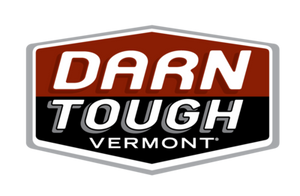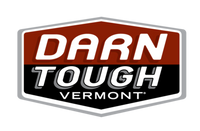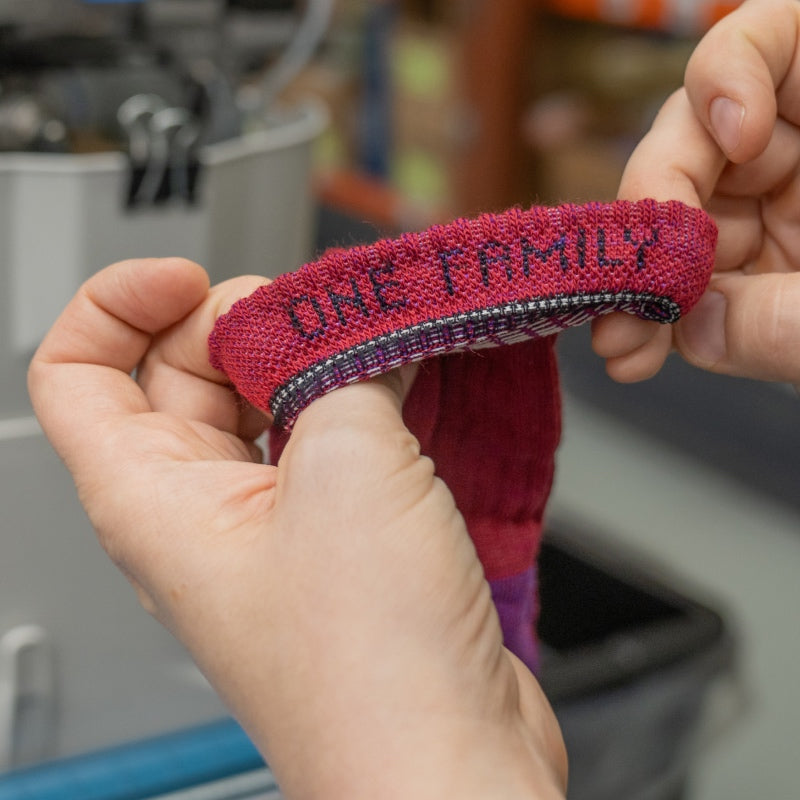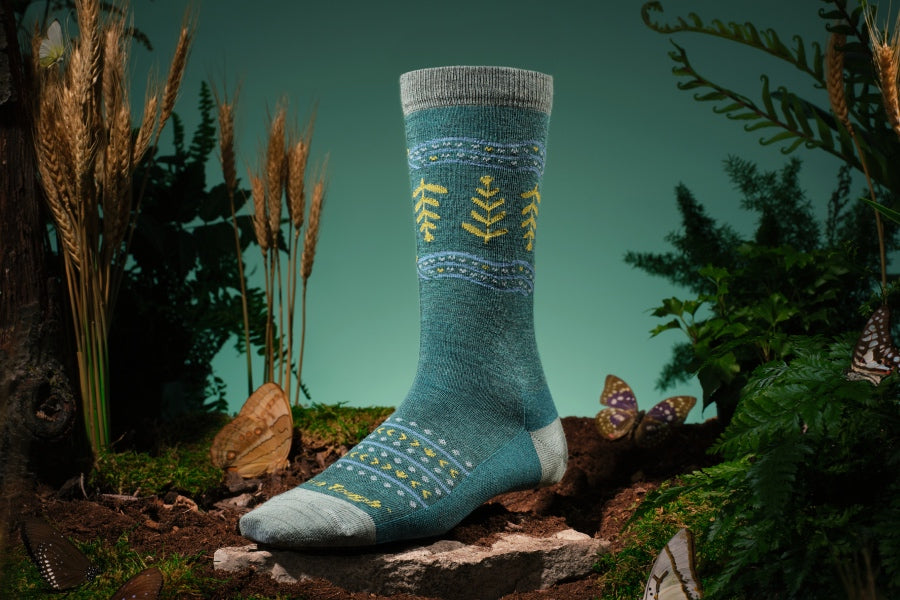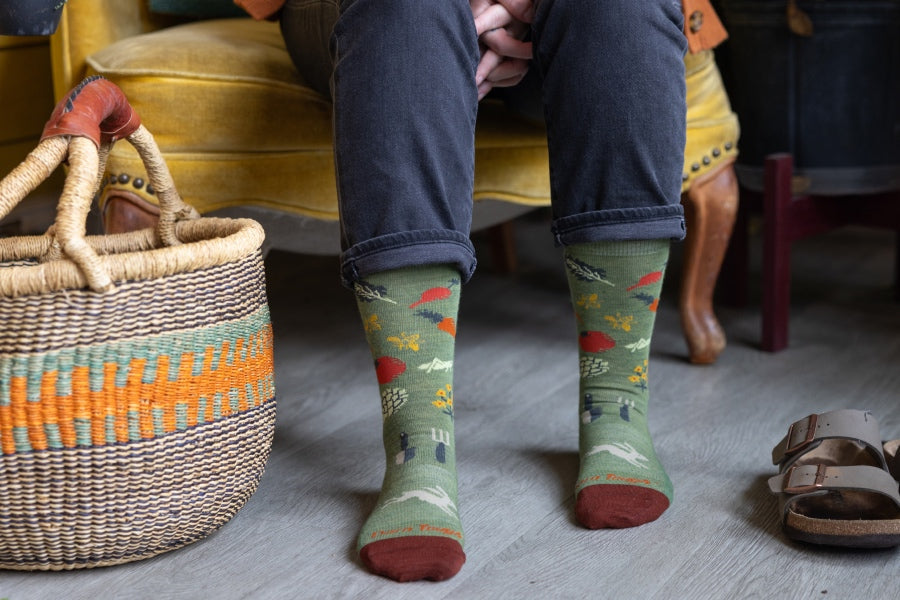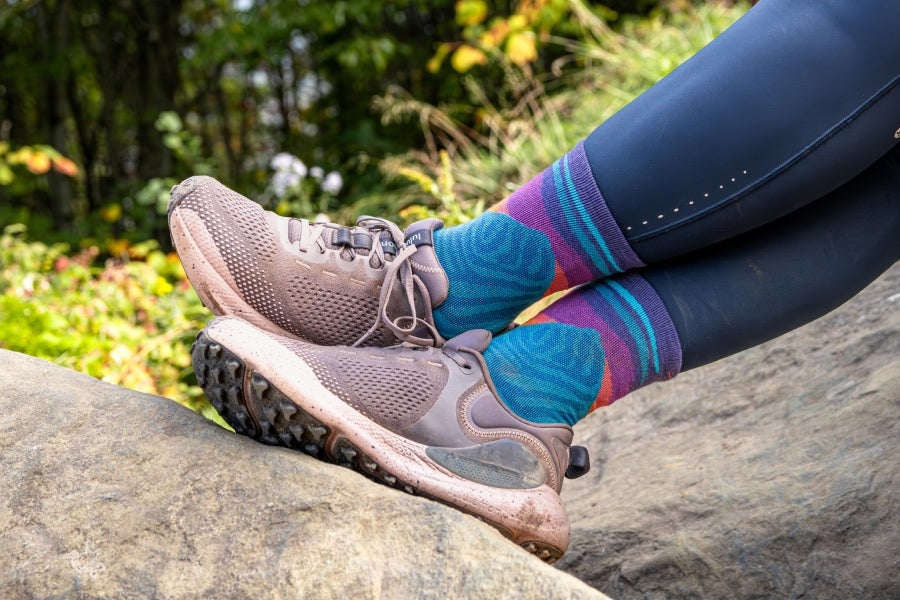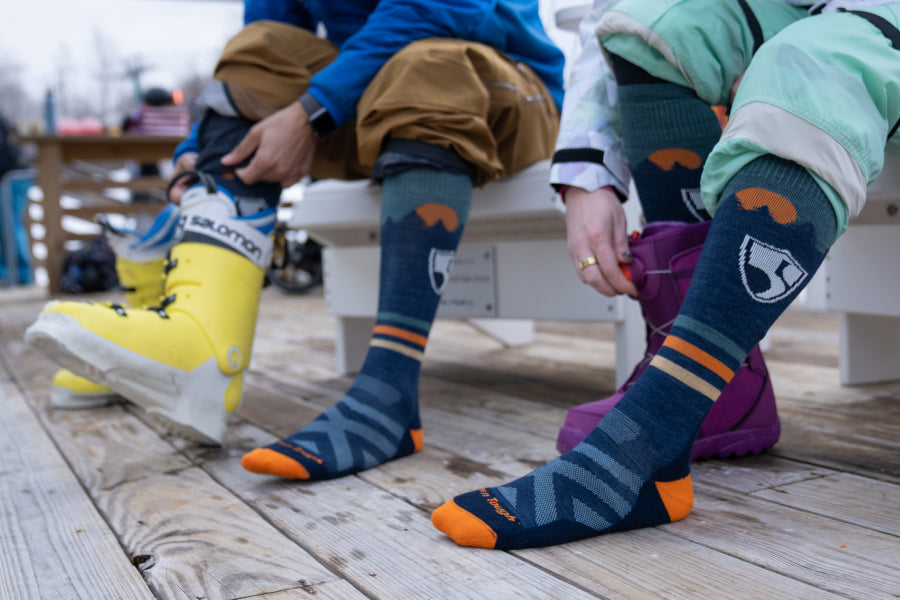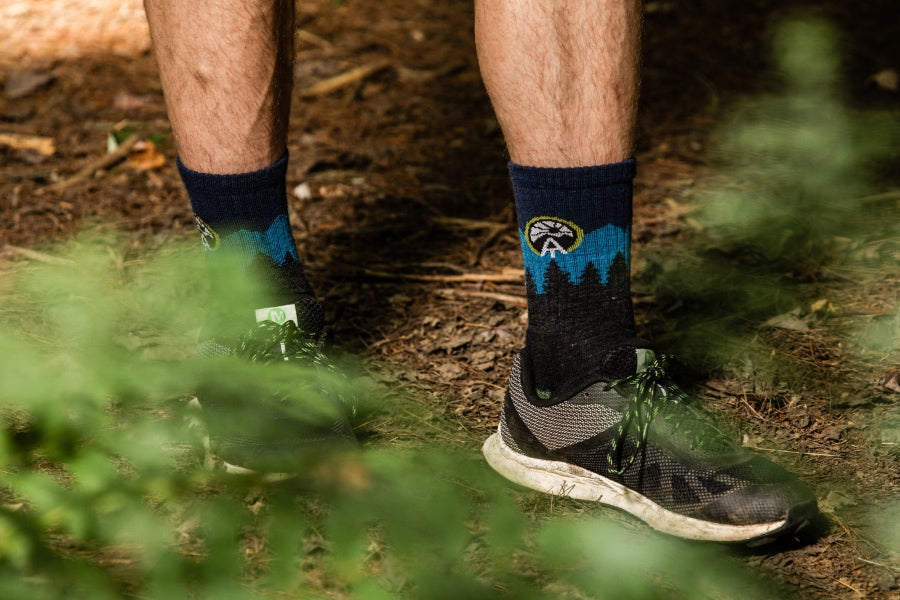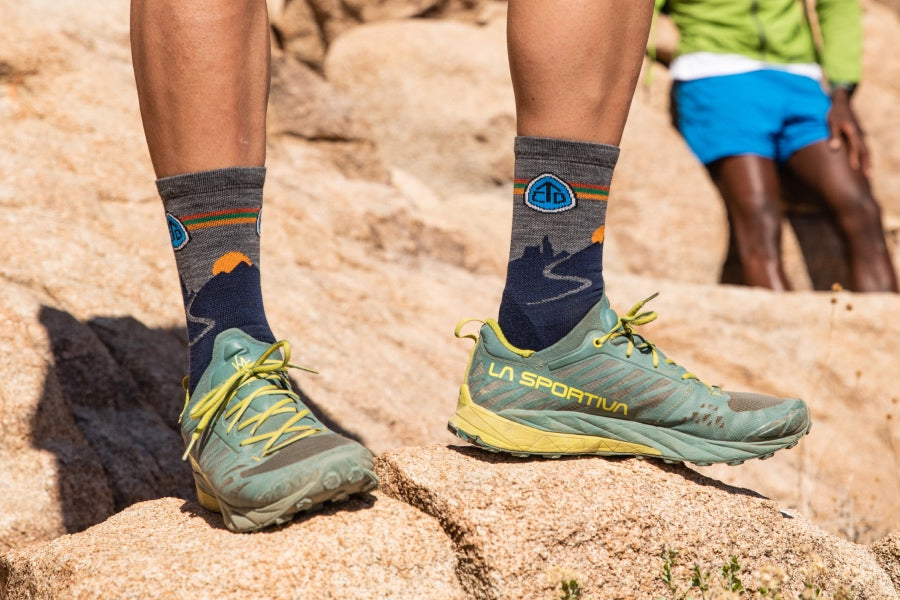
Our Socks Give a Darn
We don’t just knit socks... we knit socks with a purpose. At Darn Tough, we show up for each other, and our community, the same way we show up for ourselves. Knit to Give started with just the Vermont Foodbank, but the program hasn't stopped growing.
Fighting Food Insecurity
We know that a healthy community starts with a good meal, which is why we’re committed to helping Vermonters and their families fight food insecurity. Hunger is real problem (in our state and around the world), but our Knit to Give socks have helped us donate over 1.5 million meals to Vermonters in need.
Grain or Shine
This employee-designed Knit to Give sock was inspired by Vermont’s green hues, the Folly Cove Designers, and Robert Louis Stevenson, who said, “Don’t judge each day by the harvest you reap, but by the seeds that you plant.” Proceeds from this limited-edition sock support the Vermont Foodbank.
Close Knit
Inspired by the quote, “The greatest gift you can give someone is kindness,” this little lamb knits gifts for his friends. An employee-designed Lightweight Crew, 5% of the proceeds from this pair go directly to the Vermont Foodbank.
Farmer's Market
A revamp of our first Vermont Foodbank sock, the new Farmer’s Market is an ode to sustainable living and supporting local. A hug for your feet (and the earth), this sock puts food on the table for those in need.
Dairy Air
Dairy farming in Vermont dates back to the mid-1800’s. It’s an industry with roots as old as any in our state’s history, and one that the Dairy Air supports by donating 5% of sales directly to the Vermont Foodbank.
Socks That Value Differences
We value differences and the opportunity for everyone – regardless of their limitations – to enjoy the outdoors. Partnering with groups like the High Fives Foundation and Come Alive Outside are two ways we do that.
Mirnavated
In collaboration with athlete Mirna Valerio, 5% of the proceeds from these socks support her chosen non-profit organization, Come Alive Outside, based in Rutland, VT. Their programs encourage children and adults to ditch digital devices and lead more active outdoor lifestyles.
High Fives
Founded by Vermont native, Roy Tuscany, the High Fives Foundation is deeply rooted in valuing differences and creating a universal shift in adventure sports. Our partnership with them is punctuated by their motto, "Adapt and Destroy."
Trail Protection & Conservation
We owe everything we have to the great outdoors. Nobody’s hiked more miles on trail than us, but with that comes a great sense of responsibility. We want to protect these spaces for future generations – and with your help we know we can.
ATC
America’s first national scenic trail, the Appalachian Trail (A.T.) is coveted by long-distance hikers. Proceeds from this sock support the Appalachian Trail Conservancy’s (ATC) outdoor education programs and trail maintenance efforts.
PCT
The Pacific Crest Trail Association (PCTA) advocates for the conservation of the PCT and the land through which it passes. Spanning 2,650 miles from Mexico to Canada, this trail crosses three states and seven National Parks.
CDT
Proceeds from this sock help the Continental Divide Trail Coalition (CDTC) maintain our nation’s most rugged and remote long-distance hiking trails. It’s the highest national scenic trail – and at 3,100 miles – also the longest.
Unconditional Giving
If you know us, you know we don’t chase perfection… we simply work harder to be better. There’s no end game when it comes to giving, and that’s what keeps us chasing. We’ve hit some key milestones along the way, but still, we're far from finished.
FAQs
High Fives’ mission is to create a universal shift in adventure sports that expands what is possible for those who have faced life-changing injuries.
At the root of the issue, fighting hunger embodies Darn Tough’s values – supporting our community and putting family first. Vermont is our home, it’s where we knit our socks, but more importantly, it’s where we live, where we play, where we raise our children, and support our neighbors. In Vermont and in Darn Tough, we realized hunger is an issue that we could truly make a difference in.
We are constantly trying to find new ways to help support the Foodbank. From donating turkey to Giving Tuesdays to knitting Limited Edition socks, we are always looking to up our giving game. Our employees also volunteer at the Foodbank and look for ways to get involved with their hands, not just through their feet.
Our first Giving Tuesday in 2017, we donated 100% of DarnTough.com profits to the Vermont Foodbank, resulting in about 35,000 meals. Since then, every Giving Tuesday has been a day to raise donations to give back to the Vermont Foodbank.
The largest anti-hunger organization in Vermont, the Vermont Foodbank works to ensure all Vermonters have access to food every day. To learn more about their efforts visit their website.
The Vermont Foodbank, a member of Feeding America, provides about 12 million pounds of food annually to people throughout Vermont.
One in nine people face hunger in Vermont, according to Feeding America, the Vermont Foodbank’s parent organization. One in seven Vermont children face hunger.
Feeding America defines food insecurity as a lack of consistent access to enough food for every person in a household to live an active, healthy life. This can be a temporary situation for a household or can last a long time. Food insecurity is one way we can measure how many people cannot afford food.
While there are many causes of food insecurity, it stems from the struggle for many Americans to meet their basic needs. A lay-off at work or unexpected car maintenance can lead a family to choose between buying food or paying bills. You can find out more about the causes of food insecurity on Feeding America’s website.
Giving back can take many forms. Whether you buy a Knit to Give sock (all profits support the Vermont Foodbank), donate money directly to the organization, or donate your time by volunteering at one of their many volunteer opportunities, you can find a way to help Vermonters in need. Find out how to get involved here.
